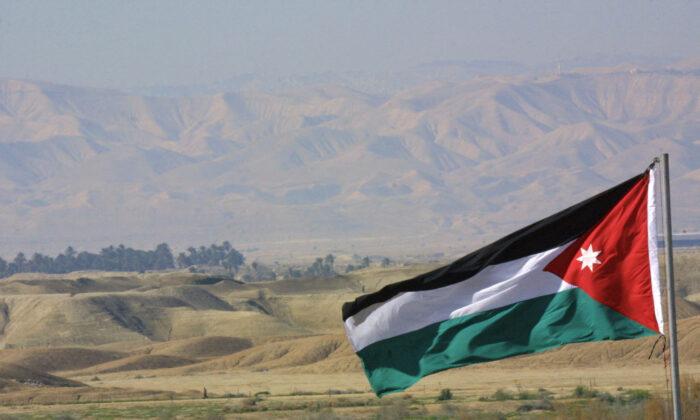ADANA, Turkey—One day after southern Turkey was rocked by two major earthquakes, residents of the country’s Adana Province are struggling to come to grips with the devastation—and holding out hope that lost loved ones may still be found.
“Six of my family members are still missing,” said Davut Karaagac, who rushed to Adana from Istanbul immediately after the first earthquake.
“Over the past 48 hours, we’ve helped rescue workers pull several people from under the rubble,” Karaagac, 57, told The Epoch Times. “But none of them were my family members.”
The first earthquake, measuring 7.8 in magnitude, struck in the early hours of Feb. 6, leveling buildings and killing thousands of people across 10 provinces.
Nine hours later, the same region was struck by a 7.6-magnitude quake that compounded the destruction.
“We were here when the second earthquake struck,” Karaagac said. “High-rise buildings were swinging back and forth. There was smoke and dust everywhere.”

In the hours after the second quake, Karaagac says he helped pull 17 people from the rubble of collapsed buildings.
“But of these,” he said, “only two of them were alive.”
Mehmet Turacci, a 33-year-old Adana resident who witnessed the back-to-back quakes, described the experience—and its aftermath—as “terrifying.”
“I’ve seen people being pulled from the rubble, both dead and alive,” he told The Epoch Times. “Under such traumatic circumstances, it’s really hard to keep calm and maintain your composure.”

As of the evening of Feb. 7, the official death toll in Turkey stood at 5,894, with another 34,810 injured. An estimated 5,775 buildings have reportedly collapsed entirely as a result of the two main earthquakes and more than 430 aftershocks.
Across the border in Syria, meanwhile, the twin quakes caused widespread devastation in the northern provinces of Idlib, Aleppo, Hama, Latakia, and Raqqa. According to the Syrian Health Ministry, more than 1,900 people have been killed and thousands more injured.
The epicenter of both earthquakes was in Turkey’s Kahramanmaras Province. But they also caused extensive damage in the southern provinces of Adana, Gaziantep, Sanliurfa, Diyarbakir, Adiyaman, Malatya, Osmaniye, Hatay, and Kilis.
On Feb. 7, the Turkish government declared an official state of emergency in all 10 affected provinces.
Turkey’s Adana Province, home to the U.S. military’s Incirlik Air Base, is located roughly 250 miles southeast of the capital Ankara.
Although it was one of the least affected provinces, scores of Adana residents were killed by the quakes, local authorities say, while several buildings were reduced to rubble.
According to local press reports, thousands of survivors have been successfully extracted from beneath the debris of collapsed buildings. But with nighttime temperatures falling below freezing, the chances of survival appear increasingly slim.

Nevertheless, search-and-rescue teams—and a host of local volunteers—continue to sift through the wreckage in hopes of finding survivors in Adana and other affected areas.
“It could be me trapped under the rubble,” said one volunteer rescue worker and Adana resident, a technician by trade who preferred not to give his name.
“I’m still hopeful that we will find more people alive,” he told The Epoch Times.
“We can still hear sounds coming from under the debris. Whenever this happens, we stop all our machinery and try to hone in on the source of the noise.
“We believe there still may be as many as 30 people trapped underneath.”
Salih Oral, who owns an upscale restaurant in downtown Adana, has kept his restaurant open around the clock to provide food and shelter to local residents who have been rendered homeless by the earthquakes.
“Since the first earthquake struck, we’ve been providing food, soup, and hot drinks to survivors, some of whom have nowhere else to go,” Oral, 40, told The Epoch Times. “Some of them have even been sleeping here.”
“According to our religion, Islam, anyone who is in need—or who doesn’t have a home—should be helped,” he said.
Turkish President Recep Tayyip Erdogan has described the series of earthquakes as one of the “biggest natural disasters” to hit Turkey within the past century.

In 1939, an earthquake in Turkey’s central Erzincan Province killed more than 32,000 people. Six decades later, the northwestern Izmit Province was rocked by a 7.6-magnitude quake that left more than 17,000 people dead.
Meanwhile, residents of the region, which sits on a major fault line, remain fearful of renewed seismic activity.
Shortly after midnight local time on Feb. 8, another powerful tremor—measuring magnitude 4.9—rattled the province of Kahramanmaras, the epicenter of the initial two quakes.





